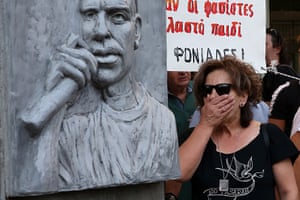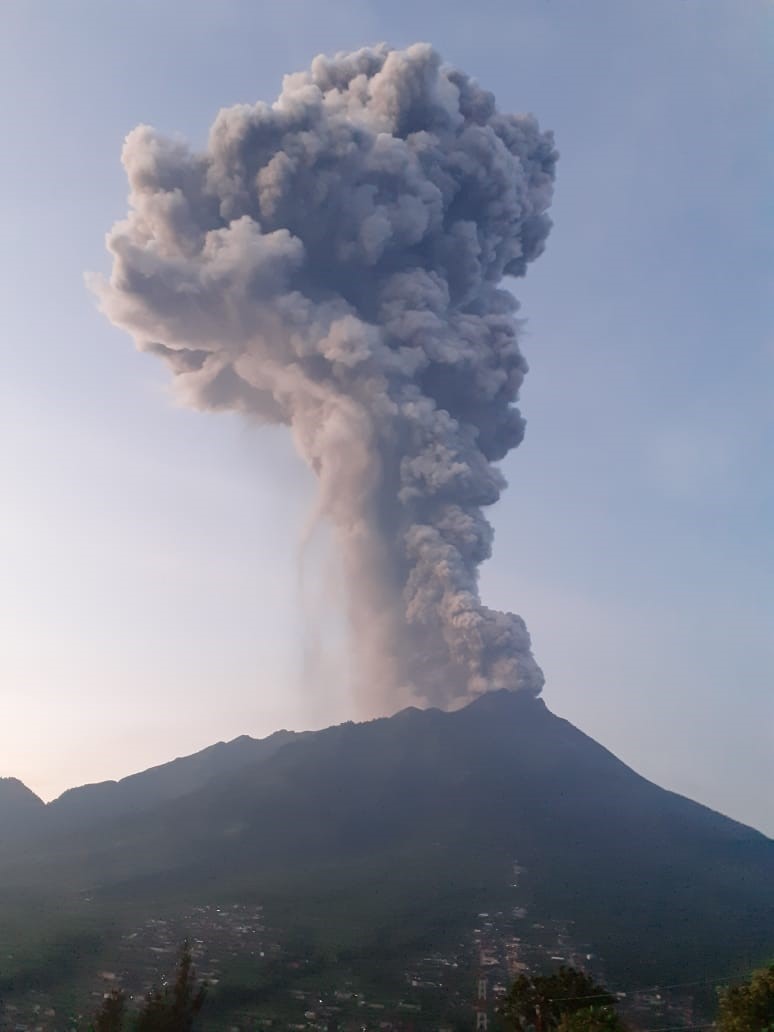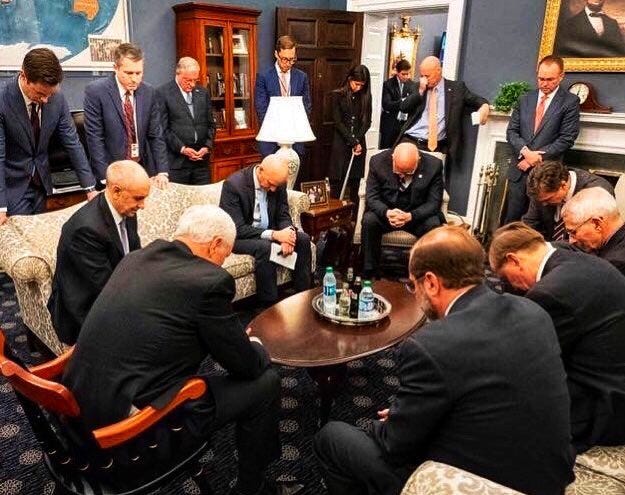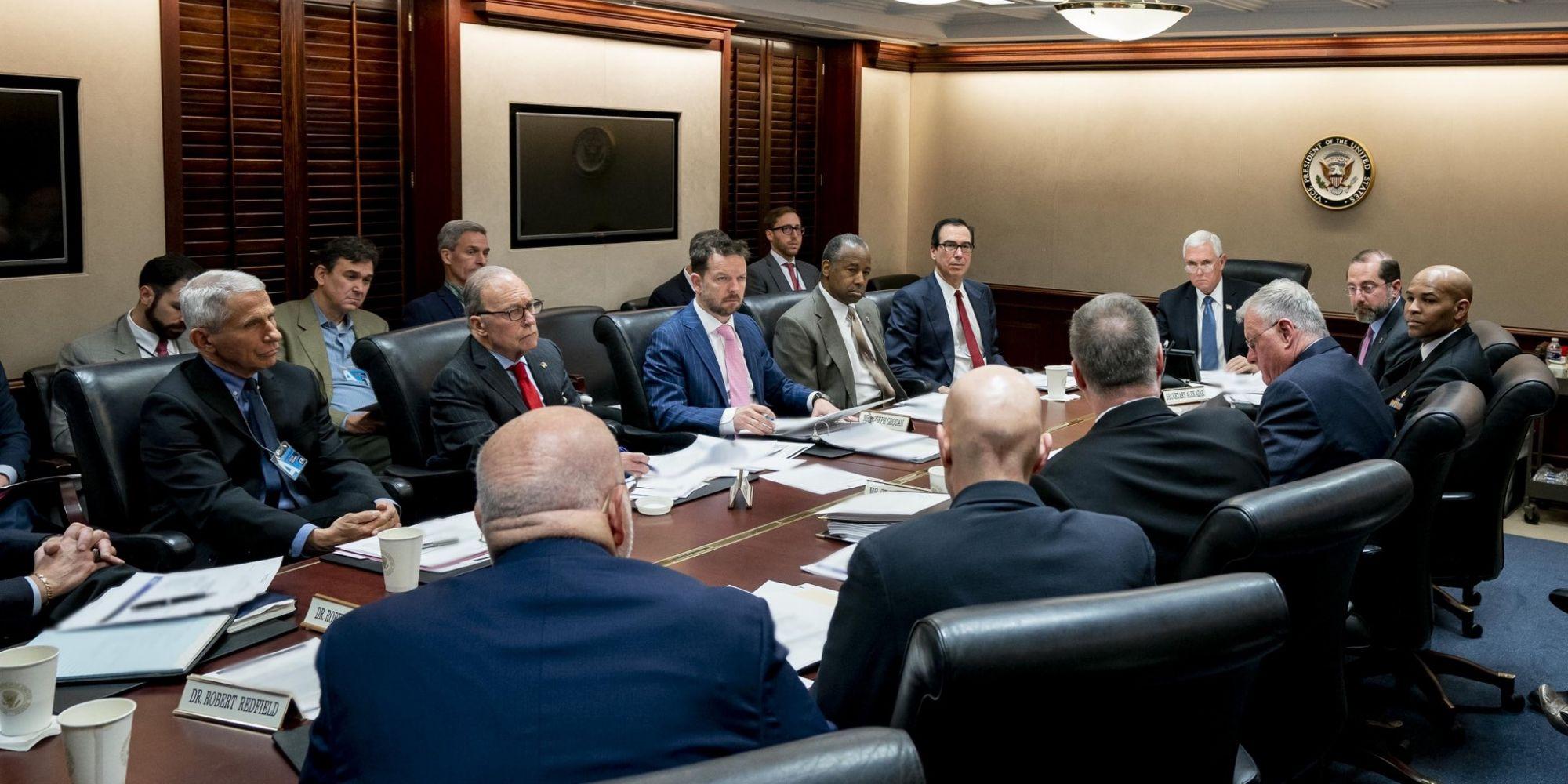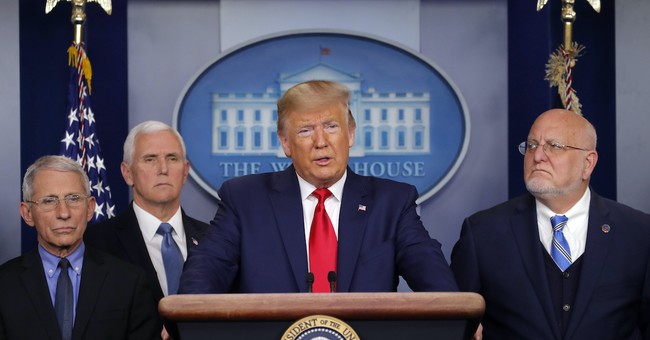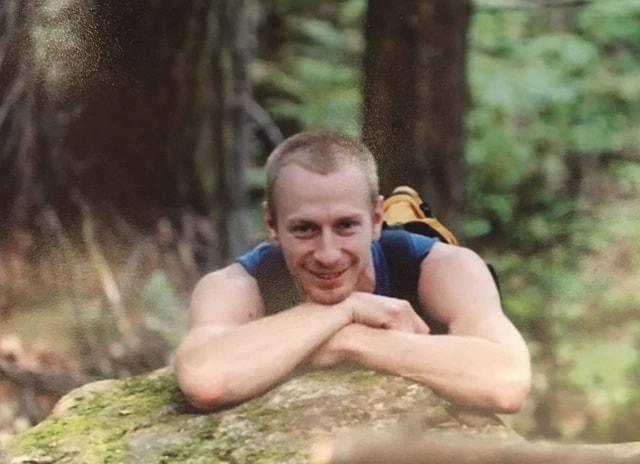Golden Dawn: the rise and fall of Greece’s neo-Nazis
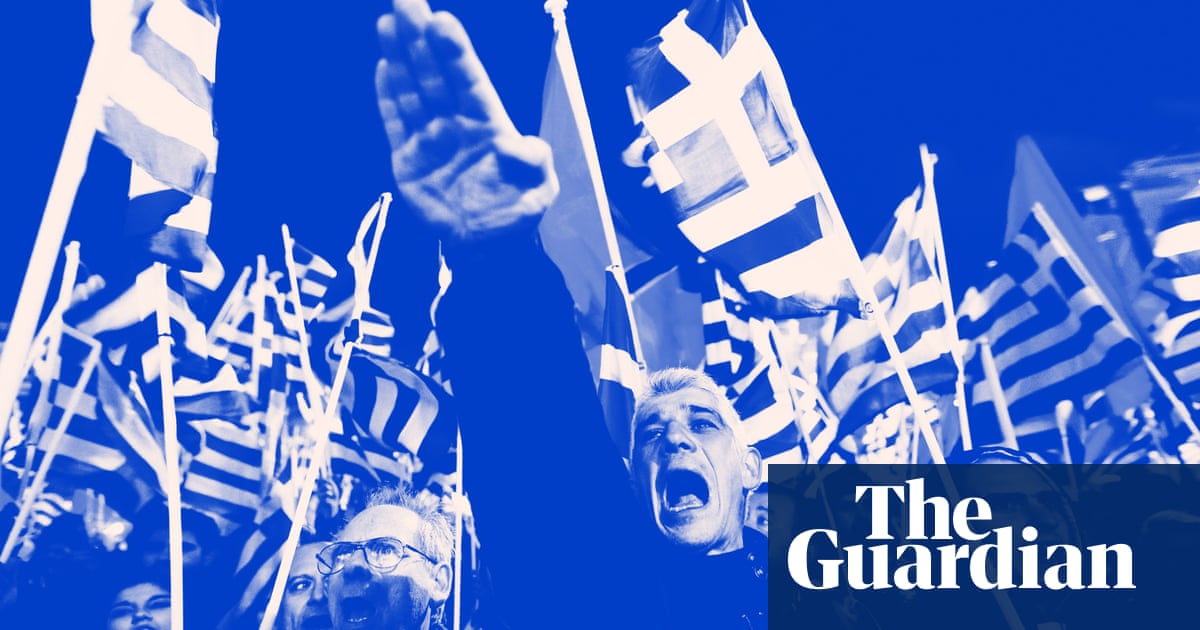
A Golden Dawn rally in Athens in 2014. Photograph: Yannis Kolesidis
A decade ago, violent racists exploited a national crisis and entered mainstream politics in Greece. The party has since been caught up in the biggest trial of Nazis since Nuremberg, and is now crumbling – but its success remains a warning.
A decade ago, violent racists exploited a national crisis and entered mainstream politics in Greece. The party has since been caught up in the biggest trial of Nazis since Nuremberg, and is now crumbling – but its success remains a warning.
By Daniel Trilling
Tue 3 Mar 2020
After he stabbed Pavlos Fyssas in the chest, leaving him to bleed to death on the pavement, Giorgos Roupakias walked calmly back to his car and waited to be arrested. “Don’t give me away, I’m one of you,” he said, according to a police officer who arrived at the scene.
“What do you mean, are you police?” asked the officer.
“No, I am Golden Dawn.”
Roupakias, an unemployed lorry driver, would later claim that the killing was an act of self-defence. He said he had simply got caught up in a random street brawl in the Greek port city of Piraeus, shortly after midnight on 18 September 2013. What he told the police officer, overheard by several witnesses, suggested something quite different. Golden Dawn was a neo-Nazi party that had risen to prominence the previous year amid Greece’s economic crisis. The party had gone from winning fewer than 20,000 votes in the country’s 2009 general election to winning more than 7% of the vote, and 18 parliamentary seats, in 2012. No outright fascist party in Europe had made such gains in a general election for years.
Although Golden Dawn’s members sometimes played the game of respectable politics, they were no mere rightwing populists; they were the kind of Nazis you are more likely to read about in history books. Driven by profound racism and antisemitic conspiracy theory, with a fervent devotion to Hitler, Golden Dawn combined street violence with torchlit flag-waving rallies and extreme rhetoric. One of its MPs proclaimed “civil war” to a BBC reporter, while an election candidate promised in front of a documentary crew to “turn on the ovens” and make lampshades from the skins of immigrants, a reference to what Nazi Germany did to Jews, Roma and other minorities in the Holocaust. “The Europe of nations is back,” declared the party’s leader, Nikolaos Michaloliakos, at a press conference in May 2012. “Greece is only the beginning.”
In the years before Golden Dawn’s electoral breakthrough, its opponents had been intimidated, beaten up and, in some cases, almost killed. Once the party’s candidates entered parliament, this kind of violence only seemed to grow. Party associates like Roupakias – who claims not to have been a member, although other witnesses say he was a key official in his local branch – seemed to believe that they were tolerated, or even supported, in their endeavours by parts of the Greek state. But the events that night in September 2013 changed everything.
On the evening of 17 September, three Golden Dawn supporters were watching football at a bar in Keratsini, a suburb of Piraeus, when they spotted Fyssas, a 34-year-old rapper on a night out with friends. Fyssas, who went by the stage name Killah P, was well known locally as a hip-hop promoter and campaigner against racism with a following among working-class Greek youth. The Golden Dawn trio started making phone calls; surveillance records show how communications travelled up the party hierarchy and back down again.
At 11.28pm, the records show that an SMS was sent from a phone alleged to belong to Giorgos Patelis, the leader of Golden Dawn’s branch in Nikaia, to several dozen contacts: “Everyone come now to the local office. Whoever is nearby. We will not wait for those who are far. Now.” Roupakias, who had been at home watching television, was one of the people who apparently responded to the call-out. Just before midnight, a convoy of Golden Dawn supporters on motorbikes, with Roupakias following in his car, arrived in Keratsini. Witnesses saw the Golden Dawn group threaten Fyssas and his friends, before chasing them around the corner and on to the main road, Tsaldari Avenue. As his friends fled, Fyssas stopped to face his attackers, who quickly pinned him to the wall.
CCTV footage shows what happens next. While Fyssas is assaulted by groups of men in twos and threes, in apparently coordinated fashion, a car driven by Roupakias pulls up. He gets out, moves in close to Fyssas as if to embrace him and delivers the fatal blow. A doctor who treated Fyssas later told his parents that the stabbing looked like a “professional hit”.
FacebookTwitterPinterest Pavlos Fyssas in 2012.
Tue 3 Mar 2020
After he stabbed Pavlos Fyssas in the chest, leaving him to bleed to death on the pavement, Giorgos Roupakias walked calmly back to his car and waited to be arrested. “Don’t give me away, I’m one of you,” he said, according to a police officer who arrived at the scene.
“What do you mean, are you police?” asked the officer.
“No, I am Golden Dawn.”
Roupakias, an unemployed lorry driver, would later claim that the killing was an act of self-defence. He said he had simply got caught up in a random street brawl in the Greek port city of Piraeus, shortly after midnight on 18 September 2013. What he told the police officer, overheard by several witnesses, suggested something quite different. Golden Dawn was a neo-Nazi party that had risen to prominence the previous year amid Greece’s economic crisis. The party had gone from winning fewer than 20,000 votes in the country’s 2009 general election to winning more than 7% of the vote, and 18 parliamentary seats, in 2012. No outright fascist party in Europe had made such gains in a general election for years.
Although Golden Dawn’s members sometimes played the game of respectable politics, they were no mere rightwing populists; they were the kind of Nazis you are more likely to read about in history books. Driven by profound racism and antisemitic conspiracy theory, with a fervent devotion to Hitler, Golden Dawn combined street violence with torchlit flag-waving rallies and extreme rhetoric. One of its MPs proclaimed “civil war” to a BBC reporter, while an election candidate promised in front of a documentary crew to “turn on the ovens” and make lampshades from the skins of immigrants, a reference to what Nazi Germany did to Jews, Roma and other minorities in the Holocaust. “The Europe of nations is back,” declared the party’s leader, Nikolaos Michaloliakos, at a press conference in May 2012. “Greece is only the beginning.”
In the years before Golden Dawn’s electoral breakthrough, its opponents had been intimidated, beaten up and, in some cases, almost killed. Once the party’s candidates entered parliament, this kind of violence only seemed to grow. Party associates like Roupakias – who claims not to have been a member, although other witnesses say he was a key official in his local branch – seemed to believe that they were tolerated, or even supported, in their endeavours by parts of the Greek state. But the events that night in September 2013 changed everything.
On the evening of 17 September, three Golden Dawn supporters were watching football at a bar in Keratsini, a suburb of Piraeus, when they spotted Fyssas, a 34-year-old rapper on a night out with friends. Fyssas, who went by the stage name Killah P, was well known locally as a hip-hop promoter and campaigner against racism with a following among working-class Greek youth. The Golden Dawn trio started making phone calls; surveillance records show how communications travelled up the party hierarchy and back down again.
At 11.28pm, the records show that an SMS was sent from a phone alleged to belong to Giorgos Patelis, the leader of Golden Dawn’s branch in Nikaia, to several dozen contacts: “Everyone come now to the local office. Whoever is nearby. We will not wait for those who are far. Now.” Roupakias, who had been at home watching television, was one of the people who apparently responded to the call-out. Just before midnight, a convoy of Golden Dawn supporters on motorbikes, with Roupakias following in his car, arrived in Keratsini. Witnesses saw the Golden Dawn group threaten Fyssas and his friends, before chasing them around the corner and on to the main road, Tsaldari Avenue. As his friends fled, Fyssas stopped to face his attackers, who quickly pinned him to the wall.
CCTV footage shows what happens next. While Fyssas is assaulted by groups of men in twos and threes, in apparently coordinated fashion, a car driven by Roupakias pulls up. He gets out, moves in close to Fyssas as if to embrace him and delivers the fatal blow. A doctor who treated Fyssas later told his parents that the stabbing looked like a “professional hit”.

FacebookTwitterPinterest Pavlos Fyssas in 2012.
Photograph: Alexandros Theodoridis/AFP via Getty
Earlier in 2013, two men linked to Golden Dawn had stabbed to death a Pakistani man, Shehzad Luqman, on the streets of Athens. That murder barely registered in Greek media, let alone internationally. The killing of Fyssas, however, made headlines all over the world. In Greece, there was widespread shock – particularly as the image of Fyssas’s mother, Magda, appeared on TV news bulletins and newspaper front pages. Clad in black, grieving, demanding justice for her son, she made it “a case for every Greek”, as Kostis Papaioannou, a prominent human rights activist, told me last year.
The murder investigation quickly became an investigation of Golden Dawn itself, and the result is a vast criminal trial – the largest trial of Nazis since Nuremberg, according to lawyers representing some of Golden Dawn’s alleged victims. More than six years after it began, the trial is only now drawing to a close. A total of 68 people are charged with directing or belonging to a criminal organisation. The defendants, who include Golden Dawn’s entire leadership and all of its former MPs, are charged with dozens of additional crimes including racketeering, attempted murder and weapons possession. They all deny the charges.
Court hearings will end this spring, and a verdict is due shortly after, but Greece has already started to move on. Golden Dawn was wiped out in last year’s general election, and a new conservative government has declared the years of crisis over. Many media outlets only cover the trial sporadically. According to the centrist political commentator Yannis Palaiologos, Greece now has an opportunity to draw a line under the populism of both left and right. “As the various populist myths about the causes and possible solutions to Greece’s crisis have been revealed as delusions and outright lies,” he wrote in a piece for the Washington Post last year, “the fuel that sustained extremism has been depleted.”
Yet it would be a mistake to overlook what the trial has revealed. The story of Golden Dawn is the closest we’ve yet come to seeing fascism in its most extreme form regain a foothold in European politics this century. What makes it doubly shocking is that it took place in a country that suffered brutally at the hands of Nazi Germany – and that the European Union, founded on the promise of “never again”, was partly responsible for Golden Dawn’s rise. How is it that a movement that recalls some of the worst moments of the 20th century could flourish in our own time?
In the days after the killing, Greece’s justice system sprung into action. The minister for public order asked the supreme court to investigate Golden Dawn, handing over details of 32 alleged crimes that ranged from violent threats to grievous bodily harm, stabbings and murder. Michaloliakos, a squat, middle-aged man with greying hair and a bulldog face, was arrested, along with dozens of other senior members. Raids on party offices and members’ homes uncovered caches of weapons and Nazi paraphernalia, and footage of occult swearing-in ceremonies. Before September 2013, Golden Dawn’s support had been higher than ever – that year, according to Papaioannou, some pollsters had been reluctant to publish the results of surveys that put it in double-digit figures, some as high as 17% or 18%, for fear it would give them further legitimacy. Now the party’s poll ratings plummeted.
Yet the danger posed by Golden Dawn had been clear for years. North-west of Athens city centre is a square dominated by an Orthodox Church dedicated to the fourth-century martyr Saint Pantaleimon. In the late 2000s, Golden Dawn established a public presence there by turning some of the local Greek residents against their immigrant neighbours.
Golden Dawn was founded in the early 80s, initially as a Masonic society, according to the investigative journalist Dimitris Psarras, an authority on the party. For many years it remained small and semi-hidden, recruiting its members from Greece’s football hooligan scene. In the late 00s, however, it pursued a new strategy, setting up an “angry citizens” group in Saint Pantaleimon to complain about crime it linked to immigrants, mainly refugees from Afghanistan, who had recently moved into the area. Many lived in poverty or destitution, trapped by a Greek asylum system that didn’t work and an EU regulation that would not let them travel elsewhere, but a community was starting to put down roots; some Afghans had opened shops and cafes on the square.
In an early sign of economic turmoil, several inner-city neighbourhoods of Athens became visibly poorer during this period; a decline that some people blamed on immigration. Saint Pantaleimon and the surrounding streets became notorious for racist attacks. So-called “assault squads” of men, who witnesses often said wore T-shirts bearing Golden Dawn’s logo, would beat Afghan, Pakistani and west African residents with sticks and knuckledusters. Local Greek people who spoke out against Golden Dawn, like the owner of a pharmacy I interviewed a few years ago, were threatened, too. “After the refugees,” she said they’d told her, “the targets will be you, the leftists and the Jews.” In 2010, voters in Athens elected Michaloliakos to the city council.
Every country in Europe has groups like Golden Dawn: small, often clandestine networks of rightwing extremists whose ideology blurs the line between politics and a cult. Their hopes of breaking into the mainstream lie in economic collapse, intense social conflict or a state that doesn’t enforce the law. In the wake of the global financial crisis, Greece offered Golden Dawn a combination of all three.
In 2009, Greece’s newly elected government, led by the centre-left party Pasok (the Panhellenic Socialist Movement), announced it had discovered a huge hole in the public finances. Greece was one of the countries left most exposed by the financial crash, and the fallout threatened not just the national economy but the stability of the euro. The government was forced to accept a bailout from international lending institutions, which came with punishing austerity measures insisted on by the EU. Tax rises, wage suppression and cuts to public spending forced hundreds of thousands of people into poverty. A tax on heating fuel symbolised the hardship and humiliation: many people started to use wood-burning stoves, and 19th-century smog returned to Greek cities during the winter months.
Earlier in 2013, two men linked to Golden Dawn had stabbed to death a Pakistani man, Shehzad Luqman, on the streets of Athens. That murder barely registered in Greek media, let alone internationally. The killing of Fyssas, however, made headlines all over the world. In Greece, there was widespread shock – particularly as the image of Fyssas’s mother, Magda, appeared on TV news bulletins and newspaper front pages. Clad in black, grieving, demanding justice for her son, she made it “a case for every Greek”, as Kostis Papaioannou, a prominent human rights activist, told me last year.
The murder investigation quickly became an investigation of Golden Dawn itself, and the result is a vast criminal trial – the largest trial of Nazis since Nuremberg, according to lawyers representing some of Golden Dawn’s alleged victims. More than six years after it began, the trial is only now drawing to a close. A total of 68 people are charged with directing or belonging to a criminal organisation. The defendants, who include Golden Dawn’s entire leadership and all of its former MPs, are charged with dozens of additional crimes including racketeering, attempted murder and weapons possession. They all deny the charges.
Court hearings will end this spring, and a verdict is due shortly after, but Greece has already started to move on. Golden Dawn was wiped out in last year’s general election, and a new conservative government has declared the years of crisis over. Many media outlets only cover the trial sporadically. According to the centrist political commentator Yannis Palaiologos, Greece now has an opportunity to draw a line under the populism of both left and right. “As the various populist myths about the causes and possible solutions to Greece’s crisis have been revealed as delusions and outright lies,” he wrote in a piece for the Washington Post last year, “the fuel that sustained extremism has been depleted.”
Yet it would be a mistake to overlook what the trial has revealed. The story of Golden Dawn is the closest we’ve yet come to seeing fascism in its most extreme form regain a foothold in European politics this century. What makes it doubly shocking is that it took place in a country that suffered brutally at the hands of Nazi Germany – and that the European Union, founded on the promise of “never again”, was partly responsible for Golden Dawn’s rise. How is it that a movement that recalls some of the worst moments of the 20th century could flourish in our own time?
In the days after the killing, Greece’s justice system sprung into action. The minister for public order asked the supreme court to investigate Golden Dawn, handing over details of 32 alleged crimes that ranged from violent threats to grievous bodily harm, stabbings and murder. Michaloliakos, a squat, middle-aged man with greying hair and a bulldog face, was arrested, along with dozens of other senior members. Raids on party offices and members’ homes uncovered caches of weapons and Nazi paraphernalia, and footage of occult swearing-in ceremonies. Before September 2013, Golden Dawn’s support had been higher than ever – that year, according to Papaioannou, some pollsters had been reluctant to publish the results of surveys that put it in double-digit figures, some as high as 17% or 18%, for fear it would give them further legitimacy. Now the party’s poll ratings plummeted.
Yet the danger posed by Golden Dawn had been clear for years. North-west of Athens city centre is a square dominated by an Orthodox Church dedicated to the fourth-century martyr Saint Pantaleimon. In the late 2000s, Golden Dawn established a public presence there by turning some of the local Greek residents against their immigrant neighbours.
Golden Dawn was founded in the early 80s, initially as a Masonic society, according to the investigative journalist Dimitris Psarras, an authority on the party. For many years it remained small and semi-hidden, recruiting its members from Greece’s football hooligan scene. In the late 00s, however, it pursued a new strategy, setting up an “angry citizens” group in Saint Pantaleimon to complain about crime it linked to immigrants, mainly refugees from Afghanistan, who had recently moved into the area. Many lived in poverty or destitution, trapped by a Greek asylum system that didn’t work and an EU regulation that would not let them travel elsewhere, but a community was starting to put down roots; some Afghans had opened shops and cafes on the square.
In an early sign of economic turmoil, several inner-city neighbourhoods of Athens became visibly poorer during this period; a decline that some people blamed on immigration. Saint Pantaleimon and the surrounding streets became notorious for racist attacks. So-called “assault squads” of men, who witnesses often said wore T-shirts bearing Golden Dawn’s logo, would beat Afghan, Pakistani and west African residents with sticks and knuckledusters. Local Greek people who spoke out against Golden Dawn, like the owner of a pharmacy I interviewed a few years ago, were threatened, too. “After the refugees,” she said they’d told her, “the targets will be you, the leftists and the Jews.” In 2010, voters in Athens elected Michaloliakos to the city council.
Every country in Europe has groups like Golden Dawn: small, often clandestine networks of rightwing extremists whose ideology blurs the line between politics and a cult. Their hopes of breaking into the mainstream lie in economic collapse, intense social conflict or a state that doesn’t enforce the law. In the wake of the global financial crisis, Greece offered Golden Dawn a combination of all three.
In 2009, Greece’s newly elected government, led by the centre-left party Pasok (the Panhellenic Socialist Movement), announced it had discovered a huge hole in the public finances. Greece was one of the countries left most exposed by the financial crash, and the fallout threatened not just the national economy but the stability of the euro. The government was forced to accept a bailout from international lending institutions, which came with punishing austerity measures insisted on by the EU. Tax rises, wage suppression and cuts to public spending forced hundreds of thousands of people into poverty. A tax on heating fuel symbolised the hardship and humiliation: many people started to use wood-burning stoves, and 19th-century smog returned to Greek cities during the winter months.

Nikolaos Michaloliakos, the head of Golden Dawn,
in the Athens supreme court last year 2019.
Photograph: Petros Giannakouris/AP
Public anger at austerity swept many parts of Europe during these years, but in Greece it developed into a full-blown crisis of legitimacy for the state. To many Greeks, the entire political class seemed corrupt. “We vote, you vote, they steal,” ran one popular slogan in the protest movement that erupted in 2011. The government’s response was to crack down on protests with riot police and teargas, even as it struggled to carry out basic functions of the state, such as tax collection or running public services.
Across the political spectrum, a feeling of national betrayal took hold. “This is not a division of left or right. The division is between the Greek people and the ones who have subjected themselves to the will of the bankers and the troika [Greece’s lenders],” said Manolis Glezos, a leftwing figurehead of the protest movement, when I interviewed him at the peak of the crisis. Glezos was a hero of the Greek resistance during the second world war. As a teenage boy, while Athens was under German occupation, he had climbed the Acropolis and torn down the swastika flag that hung there. In return, he was tortured. Now, in his 90s, he led protests outside the Greek parliament that were attended by an array of groups: leftists and some rightwing nationalists; labourers and middle-class professionals; public sector workers and small business owners.
In this fraught atmosphere, Golden Dawn worked hard to attract the support of the disaffected, vehemently opposing the disorder of the protests, but positioning itself against austerity. It expanded across the country, building several well-organised branches around Piraeus, a port city dominated by Greece’s powerful shipping industry and beset by unemployment. “Call us if you want to get rid of the commies,” its members told people in the shipyards, traditionally the stronghold of a trade union affiliated with Greece’s Communist party.
For the 2012 general election, the party veered between a more populist image – railing against Greece’s creditors; allegedly hiding the neo-Nazi parts of its doctrine with a new party constitution – and violent rhetoric, promising to sink boats carrying migrants across the Aegean. Its candidates claimed to offer security that the state was unable to provide: one widely circulated campaign photograph showed Golden Dawn members escorting an elderly Greek woman to a cashpoint; she was later revealed to be the mother of one of the members.
The 2012 election was won by the established rightwing party New Democracy, but the bigger story was that voters had deserted the mainstream in droves. Many went left, transforming the once-marginal radical left party Syriza into a major opposition force. Others turned to Golden Dawn. “I feel like the whole system is a lie,” one Golden Dawn voter, a young woman who worked in marketing, told me that year. On another occasion, I was accosted by an elderly lady at a food market who demanded I tell my readers that she voted for Golden Dawn to show that “we Greeks can stand on our own two feet”.
In October, five months after the election, a coalition of NGOs including the UN’s refugee agency warned of a steep rise in racist assaults in Greece, many of which shared the modus operandi of Golden Dawn’s alleged attack squads. Other violent incidents began to stack up: one of Golden Dawn’s MPs slapped a female leftwing opponent in the face live on television; two others led a mass assault on a community centre in suburban Athens that offered language lessons to immigrants, in which witnesses described adults being beaten in front of terrified children. A string of assaults, increasing in severity, preceded the killing of Fyssas.
When I first visited Athens, in late 2012, I found that the Afghan community had been driven out of Saint Pantaleimon, their shops and cafes shuttered. Yonous Muhammadi, the head of the Afghan community association, was working from an office in a secret location, because his previous headquarters had been firebombed. A few years earlier, he said, his organisation had held a press conference to raise the alarm about the violence linked to Golden Dawn. “For now it is our problem – migrants and refugees,” he had warned. “But soon it will be a problem for all of you Greek people too.”
In late 2013, after the wave of arrests that followed the killing of Fyssas, Greece’s supreme court appointed two magistrates to carry out the investigation. Over nine months, they assembled a case file containing more than a terabyte of data: witness statements, police interviews, photographs, videos, confiscated hard drives, call records and wiretapped phone conversations. Some of the more lurid details were leaked to the Greek media, such as a video of the party’s deputy leader, Christos Pappas, apparently teaching his children to shout “Heil Hitler”.
The drop in public support for Golden Dawn proved to be temporary. A few months after the killing, it was back to polling around 7% – the vote it had received in the 2012 election. Greece’s crisis had not abated, and the New Democracy-led government was trying to push through the unpopular austerity measures that its predecessors had failed to.
The country’s political and media class was split over how to treat Golden Dawn, since Greece’s constitution does not allow for the banning of political parties. In late 2013, when parliament voted to suspend the party’s state election funding and waive its MPs’ immunity from prosecution, the move was opposed by a minority of leftwingers, one of whom argued that Golden Dawn was “not a classic Nazi party”, since it set itself in opposition to “the dominant bourgeois forces”. In 2014, several defence lawyers for Golden Dawn members who were under investigation appeared on a TV chat show to argue that while they didn’t support the party’s views, they were doing their jobs in the interest of democracy and free speech.
Suspending funds did not stop 17 of Golden Dawn’s 18 MPs retaining their seats at the general election of January 2015. It was won overall by Syriza, who formed a left-right coalition with the nationalist Independent Greeks, promising to defy EU-imposed austerity. One month later, the judicial council of the Athens appeals court, a panel of judges that decides on whether a case should proceed, charged 69 Golden Dawn members and supporters, including all of its sitting MPs, under article 187 of Greece’s penal code, which relates to organised crime. (One defendant has since died, so 68 now await a verdict.) The indictment made clear that the defendants were not on trial for their beliefs. “This ideology of the leaders, supporters and friends of the political party is not in itself criminal,” the council wrote. Instead, the trial examines whether Golden Dawn used violence to impose its ideas on others, and whether that violence was planned and directed from the top of the party.
Dozens of other charges, ranging from weapons possession to perjury, have been brought against individual defendants. In addition to the state’s case, lawyers representing some of Golden Dawn’s alleged victims have brought civil prosecutions, which have also been incorporated into the main trial. These relate to the murder of Fyssas, the attempted murder of communist trade unionists outside the Piraeus shipyards, and the attempted murder of a group of Egyptian fishermen, also close to Piraeus.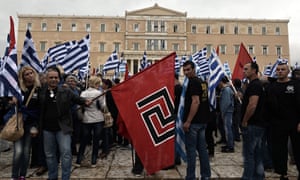
Public anger at austerity swept many parts of Europe during these years, but in Greece it developed into a full-blown crisis of legitimacy for the state. To many Greeks, the entire political class seemed corrupt. “We vote, you vote, they steal,” ran one popular slogan in the protest movement that erupted in 2011. The government’s response was to crack down on protests with riot police and teargas, even as it struggled to carry out basic functions of the state, such as tax collection or running public services.
Across the political spectrum, a feeling of national betrayal took hold. “This is not a division of left or right. The division is between the Greek people and the ones who have subjected themselves to the will of the bankers and the troika [Greece’s lenders],” said Manolis Glezos, a leftwing figurehead of the protest movement, when I interviewed him at the peak of the crisis. Glezos was a hero of the Greek resistance during the second world war. As a teenage boy, while Athens was under German occupation, he had climbed the Acropolis and torn down the swastika flag that hung there. In return, he was tortured. Now, in his 90s, he led protests outside the Greek parliament that were attended by an array of groups: leftists and some rightwing nationalists; labourers and middle-class professionals; public sector workers and small business owners.
In this fraught atmosphere, Golden Dawn worked hard to attract the support of the disaffected, vehemently opposing the disorder of the protests, but positioning itself against austerity. It expanded across the country, building several well-organised branches around Piraeus, a port city dominated by Greece’s powerful shipping industry and beset by unemployment. “Call us if you want to get rid of the commies,” its members told people in the shipyards, traditionally the stronghold of a trade union affiliated with Greece’s Communist party.
For the 2012 general election, the party veered between a more populist image – railing against Greece’s creditors; allegedly hiding the neo-Nazi parts of its doctrine with a new party constitution – and violent rhetoric, promising to sink boats carrying migrants across the Aegean. Its candidates claimed to offer security that the state was unable to provide: one widely circulated campaign photograph showed Golden Dawn members escorting an elderly Greek woman to a cashpoint; she was later revealed to be the mother of one of the members.
The 2012 election was won by the established rightwing party New Democracy, but the bigger story was that voters had deserted the mainstream in droves. Many went left, transforming the once-marginal radical left party Syriza into a major opposition force. Others turned to Golden Dawn. “I feel like the whole system is a lie,” one Golden Dawn voter, a young woman who worked in marketing, told me that year. On another occasion, I was accosted by an elderly lady at a food market who demanded I tell my readers that she voted for Golden Dawn to show that “we Greeks can stand on our own two feet”.
In October, five months after the election, a coalition of NGOs including the UN’s refugee agency warned of a steep rise in racist assaults in Greece, many of which shared the modus operandi of Golden Dawn’s alleged attack squads. Other violent incidents began to stack up: one of Golden Dawn’s MPs slapped a female leftwing opponent in the face live on television; two others led a mass assault on a community centre in suburban Athens that offered language lessons to immigrants, in which witnesses described adults being beaten in front of terrified children. A string of assaults, increasing in severity, preceded the killing of Fyssas.
When I first visited Athens, in late 2012, I found that the Afghan community had been driven out of Saint Pantaleimon, their shops and cafes shuttered. Yonous Muhammadi, the head of the Afghan community association, was working from an office in a secret location, because his previous headquarters had been firebombed. A few years earlier, he said, his organisation had held a press conference to raise the alarm about the violence linked to Golden Dawn. “For now it is our problem – migrants and refugees,” he had warned. “But soon it will be a problem for all of you Greek people too.”
In late 2013, after the wave of arrests that followed the killing of Fyssas, Greece’s supreme court appointed two magistrates to carry out the investigation. Over nine months, they assembled a case file containing more than a terabyte of data: witness statements, police interviews, photographs, videos, confiscated hard drives, call records and wiretapped phone conversations. Some of the more lurid details were leaked to the Greek media, such as a video of the party’s deputy leader, Christos Pappas, apparently teaching his children to shout “Heil Hitler”.
The drop in public support for Golden Dawn proved to be temporary. A few months after the killing, it was back to polling around 7% – the vote it had received in the 2012 election. Greece’s crisis had not abated, and the New Democracy-led government was trying to push through the unpopular austerity measures that its predecessors had failed to.
The country’s political and media class was split over how to treat Golden Dawn, since Greece’s constitution does not allow for the banning of political parties. In late 2013, when parliament voted to suspend the party’s state election funding and waive its MPs’ immunity from prosecution, the move was opposed by a minority of leftwingers, one of whom argued that Golden Dawn was “not a classic Nazi party”, since it set itself in opposition to “the dominant bourgeois forces”. In 2014, several defence lawyers for Golden Dawn members who were under investigation appeared on a TV chat show to argue that while they didn’t support the party’s views, they were doing their jobs in the interest of democracy and free speech.
Suspending funds did not stop 17 of Golden Dawn’s 18 MPs retaining their seats at the general election of January 2015. It was won overall by Syriza, who formed a left-right coalition with the nationalist Independent Greeks, promising to defy EU-imposed austerity. One month later, the judicial council of the Athens appeals court, a panel of judges that decides on whether a case should proceed, charged 69 Golden Dawn members and supporters, including all of its sitting MPs, under article 187 of Greece’s penal code, which relates to organised crime. (One defendant has since died, so 68 now await a verdict.) The indictment made clear that the defendants were not on trial for their beliefs. “This ideology of the leaders, supporters and friends of the political party is not in itself criminal,” the council wrote. Instead, the trial examines whether Golden Dawn used violence to impose its ideas on others, and whether that violence was planned and directed from the top of the party.
Dozens of other charges, ranging from weapons possession to perjury, have been brought against individual defendants. In addition to the state’s case, lawyers representing some of Golden Dawn’s alleged victims have brought civil prosecutions, which have also been incorporated into the main trial. These relate to the murder of Fyssas, the attempted murder of communist trade unionists outside the Piraeus shipyards, and the attempted murder of a group of Egyptian fishermen, also close to Piraeus.

Supporters of the Golden Dawn gather in front
of the Greek parliament in 2014.
Photograph: Louisa Gouliamaki/AFP/Getty
In April 2015, the trial began, with a flurry of media attention as Golden Dawn’s supporters fought with their anti-fascist opponents outside the Athens courthouse. More than 150 witnesses – police officers, legal and political experts, alleged victims of assaults, anonymous informants – have given testimony over the years. During this time, the media’s interest in the case has ebbed and flowed. Journalists have largely arrived only to cover spectacular moments such as Magda Fyssa’s testimony, which ended with her hurling a bottle of water at her son’s alleged killers.
The trial’s progress has been slow, beset by strikes and procedural wrangling. But it has revealed something of vital importance: how fascist ideology tries to exploit a society’s anger and resentment. At the heart of the prosecution’s case is testimony given by five former Golden Dawn members, all of whom are now under witness protection, over the course of several weeks in late 2017. Their evidence purports to set out the anatomy of a neo-Nazi organisation.
The former members described a group with a dual structure. It recruited from wider society, like a regular political party, but also gradually inducted a chosen few into “closed cells” that, they said, were sent to boot camps in the Greek countryside and trained to follow orders. Protected Witness A said he joined Golden Dawn in 2012 after a friend suggested they could help him find work and receive financial support. Witness B said she had got involved the same year after reading a Facebook post that falsely claimed “Pakistanis” were on their way to attack her local Golden Dawn branch office. Witness E said she was told that a woman “is a good national socialist if she stays in the house and has children, because her goal is to breed warriors”. But when it came to election time and Golden Dawn needed female names on the ballot paper, she claimed, she was ordered to stand as a candidate.
Witness C described what it was like to be a member of the inner core. He said he had joined the party in 2006, aged 16, when it was still a “closed club”. For the first few years, he attended discussions at the party headquarters in downtown Athens, two or three times a week, where they were taught about Hitler and Nazism. When he was a little older, Witness C claimed, he was taken out for “walks” – the term his comrades used to describe night-time assaults on people from ethnic minority backgrounds. “This one night,” Witness C recalled, “we found an immigrant, probably a Pakistani. We went near him and I punched him in the face wearing my brass knuckles. The others laughed and told me: ‘Well done boy, you’re really coming into your own.’”
The witnesses all said they believed that instructions came directly from the top. As Ilias Stavrou, another former member who waived his right to anonymity, testified: “In a party with such a military-style structure, nothing can happen without an order or permission from above. If Michaloliakos orders a hit, the person isn’t what’s important. Golden Dawn does not harbour personal feelings. For Golden Dawn, race is the ideological unit, not the person.”
The alleged existence of closed cells – similar to the stormtrooper units of the original German Nazi party, or the black-shirted squadristi of Mussolini’s Fascists – is central to the case. Psarras, the investigative journalist, told me that these core members never numbered more than 200 or 300, with just a few dozen being involved in most of the violent incidents. After 2012, as the party became more popular, it attracted at most 2,000 new members, who were kept at arm’s length as “registered supporters”.
Throughout Golden Dawn’s rise to prominence, there were persistent allegations that elements in the Greek police tolerated, or even supported its activities. In 2018, the research organisation Forensic Architecture published a study of CCTV footage and police and ambulance radio transmissions on the night Fyssas was killed, which appeared to place officers at the scene of the crime before it happened, contradicting the official account. In the neighbourhood of Saint Pantaleimon, the victims of racist attacks reported police officers looking on – or joining in – as Golden Dawn members beat them up. Trial witnesses described occasions at protests when it appeared as if Golden Dawn was acting as the “rear guard” of the riot squad, or that clashes between the two seemed like “a friendly match”.
In April 2018, the court heard wiretap evidence of a phone call between a senior Golden Dawn member – not on trial in this case – and an officer in the riot control unit, who was apparently passing on details of the movements of leftwing demonstrators. One analysis of votes cast in the 2012 election suggested that as many as 50% of riot control officers in Athens may have voted for the party. (The study was made possible because riot squad barracks had their own dedicated ballot boxes.)
The activist Kostis Papaioannou, a former president of the National Commission for Human Rights, told me that these revelations have not come as a great shock, since there is a feeling among many Greeks that “it’s not the first time” they’ve seen this happen. Rather, it’s a reminder of the country’s traumatic experiences during the 20th century.
The German occupation of Greece in the second world war was marked by famine, massacres and a growing conflict between communist-led partisans and those rightwing Greeks who collaborated with the occupiers. As the war drew to a close, British forces, who had until then supported the partisans, attempted to prevent them from running the newly liberated country. Instead, the British empowered the right. This sowed the seeds for the civil war of 1946 to 1949, during which more than 150,000 people were killed. As the historian Mark Mazower writes in Inside Hitler’s Greece, the civil war ended in victory for the right, behind whom “lurked the mysterious ‘para-state’, a loose network of shadowy rightwing paramilitary organisations dedicated to protecting Greece … from the left”.
Almost three decades of repression followed; first under a system of “managed” democracy in which leftwingers and their families were blocked from taking up public sector jobs, and former partisans were exiled to remote islands in the Aegean – then, between 1967 and 1974, by a military junta backed by the US. Golden Dawn’s leadership hails from the far-right milieu that surrounded the junta. Michaloliakos once led the youth wing of a party founded by the former leader of the dictatorship.
After the fall of the junta in 1974, Greece went through a process of reconciliation, establishing a liberal-democratic constitution. Writing in the mid-90s, Mazower could optimistically suggest that the Nazi occupation and its aftermath “has come to seem to a younger generation a matter of some antiquity, of little relevance to their own concerns”. But the crisis that engulfed Greece after 2008 brought matters that many hoped were settled back to the fore.
As people argued over who was responsible for betraying the country, and who was defending it, historical events took on a new meaning. Among the anti-government graffiti that appeared on the streets of Athens, for instance, was the slogan “Varkiza is not over”, a reference to the town where a fragile peace treaty was signed between the left and the right in 1945. As the historian Procopis Papastratis explained to me at the time, it expressed a sentiment that “our grandfathers agreed to work together and they were betrayed. And we’re not going to make the same mistake.”
In 2012, amid increasing polarisation, the party that won the general election, New Democracy, presented itself as charting a course between “two extremes” – that of Syriza on the left, and Golden Dawn on the right. But New Democracy was itself promoting a form of rightwing nationalism, aided by xenophobic media coverage on Greece’s privately owned television channels. While the government aimed to carry out the austerity measures, it also promised voters it would crack down on migrants and refugees and restore law and order. The New Democracy prime minister, Antonis Samaras, vowed to “retake” Greek city centres, which had been “occupied” by illegal immigrants. “The country has not faced an invasion of such magnitude since the Dorian invasion 3,000 years ago,” claimed one of his ministers in August 2012.Get the Guardian’s award-winning long reads sent direct to you every Saturday mo
That November, the government launched a large-scale police operation to round up undocumented immigrants and place them in detention centres. Scores of people were arrested, including two tourists, an African American and a South Korean, both of whom said they were beaten up by police despite showing their passports. Yet the anti-government mood continued unabated. According to Yannis Palaiologos in his history of the Greek crisis, The 13th Labour of Hercules, some New Democracy officials even started to privately discuss the possibility of going into coalition with Golden Dawn. “The government,” he writes, “was playing with fire.”
In this atmosphere, Golden Dawn campaigned hard to position itself as the defender of the nation. Its activists staged “Greeks-only” food banks and blood-donation drives, and forced their way into hospitals to check the residence permits of immigrant nurses. It staged spectacular rallies, with hundreds of members marching with torches and Greek flags at night, to boost its prominence in the media, with some outlets giving the party an easy ride. One talkshow host, for instance, told his viewers he believed a Golden Dawn MP’s claim that what appeared to be a swastika tattoo was, in fact, a “Trojan symbol”. The party’s public statements frequently appealed to more mainstream Greek nationalism: invocations of ancient Greek history and Orthodox Christianity; resentment of Turkey and Germany, the former oppressors; and conspiracy theories about who was responsible for Greece’s troubles.
Yet Golden Dawn’s efforts to claim the myths and symbols of the Greek nation for itself also played a part in its undoing. On 15 September 2013, days before Fyssas was killed, members stormed a commemoration event at Meligalas, a village in the Peloponnese region where, in 1944, partisans killed several hundred Greeks they accused of being Nazi collaborators. The left and the right in Greece each have their own historical moments to commemorate: when Syriza were elected to power in 2015, for instance, one of the first acts by Alexis Tsipras, the new prime minister, was to place flowers at the spot where 200 mainly communist activists were murdered by the Nazis in 1944.
Meligalas, by contrast, is claimed by the right: in its version of events, the dead were mainly civilians, and this kind of atrocity justified the subsequent repression of the left. But the sight of Golden Dawn members marching in formation to the front of the crowd and pushing the village mayor off the stage – just as he was giving a speech saying the events of the war should never be repeated – was too much for some Greek conservatives. “In Meligalas, Golden Dawn declared war on the right!” read the headline on one rightwing news website. Papaioannou told me that it was particularly shocking since Samaras, the prime minister at the time, hails from the Peloponnese. “Symbolically, it was an attack on the leader of the conservatives, because it was an attack in his own back yard,” said Papaioannou.
Two days after Fyssas was killed, Samaras visited the neighbourhood where the murder had taken place. “This government is determined,” he declared, “not to allow the descendants of Nazis to poison our social life, to commit crime and to undermine the foundations of the country that gave birth to democracy.”
In the autumn of 2019, six years after they were arrested, Golden Dawn’s leadership finally appeared in court. Throughout the year, the 68 defendants took turns to give their final statements to the court. A panel of judges – there is no jury in this type of trial – will decide whether or not Golden Dawn is a criminal organisation, and who, if anybody, bears responsibility for running it.
Even before it concludes, the trial has in effect suppressed the party, at least temporarily. With its election funds suspended, and its senior members facing prosecution, Golden Dawn was never able to build on the 7% it received in the 2012 election. After the arrests and raids of 2013, racist attacks in Greece dropped sharply: according to the Racist Violence Recording Network, an NGO monitor, there were 18 incidents in the final quarter of that year, as compared to around 50 in each of the previous quarters. In the general election of 2019, New Democracy regained power from Syriza – which, despite dire predictions of left-populist chaos in some quarters, was defeated in its attempt to overturn austerity and ended up governing as a fairly moderate social democratic party – and Golden Dawn was unseated from the national parliament. It retained just one MEP, who has since quit to form his own breakaway party.
For Thanasis Kampagiannis, a lawyer representing some of Golden Dawn’s alleged victims, the trial is only one tool among many to counter the party. He believes the case may not even have come to court were it not for mass anti-fascist protests in the autumn of 2013, which placed the government under public pressure and sought to reclaim city squares dominated by Golden Dawn. “We do not trust the institutions to dismantle completely this Nazi organisation,” declares a statement issued by Kampagiannis and other lawyers in 2013.
For this reason, Kampagiannis and two dozen other volunteers – there is no legal aid available to them – have put in hundreds of unpaid hours to sift through the case files and find evidence that state investigators may have missed. It is “a legal scandal”, he told me, that Golden Dawn members are not being prosecuted under a stricter anti-terrorism law, as was the case for 17 November, a leftwing group whose leaders were convicted in 2003 of a string of high-profile assassinations. A legacy of Greece’s fractured history is an undercurrent of violence on the left as well as the right: in late 2013, two Golden Dawn members were shot dead outside party offices in an Athens suburb, an attack that was later claimed by a hitherto unknown “revolutionary” organisation as retaliation for the killing of Fyssas.
Some individuals linked to Golden Dawn have now been convicted of specific crimes in separate trials – the killers of Shehzad Luqman, for instance, were found guilty of murder, with the judge acknowledging the crime had a racist motive. But Kampagiannis, along with several other people I spoke to, was concerned that the state still does not take the far right or racism seriously enough. In recent months, anti-immigrant protests have grown in the wake of the refugee crisis; at one such event in Athens this January, a German journalist was assaulted by far-right activists. In February, a gang of men suspected of having links to Golden Dawn were arrested on the island of Lesbos as they were patrolling a village armed with wooden clubs, allegedly looking for migrants to beat up. And in the past few days, growing tension over Turkey’s decision to let refugees approach the Greek border means the rhetoric of a migrant “invasion” has once again returned to European politics.
Towards the end of last year, as lawyers prepared to make their closing arguments, the state prosecutor – an official who sits alongside the judges and recommends what course of action they take – surprised many observers by suggesting that Golden Dawn’s leadership should be acquitted of the most serious charges, since the violent crimes were “isolated acts for which the leadership was not responsible”. This provoked a retort from Fyssas’s mother, who has attended court every day since the trial began. “Pavlos Fyssas has been dead for 75 months,” she told the prosecutor in front of the court. “You chose today to stab him again?”
In April 2015, the trial began, with a flurry of media attention as Golden Dawn’s supporters fought with their anti-fascist opponents outside the Athens courthouse. More than 150 witnesses – police officers, legal and political experts, alleged victims of assaults, anonymous informants – have given testimony over the years. During this time, the media’s interest in the case has ebbed and flowed. Journalists have largely arrived only to cover spectacular moments such as Magda Fyssa’s testimony, which ended with her hurling a bottle of water at her son’s alleged killers.
The trial’s progress has been slow, beset by strikes and procedural wrangling. But it has revealed something of vital importance: how fascist ideology tries to exploit a society’s anger and resentment. At the heart of the prosecution’s case is testimony given by five former Golden Dawn members, all of whom are now under witness protection, over the course of several weeks in late 2017. Their evidence purports to set out the anatomy of a neo-Nazi organisation.
The former members described a group with a dual structure. It recruited from wider society, like a regular political party, but also gradually inducted a chosen few into “closed cells” that, they said, were sent to boot camps in the Greek countryside and trained to follow orders. Protected Witness A said he joined Golden Dawn in 2012 after a friend suggested they could help him find work and receive financial support. Witness B said she had got involved the same year after reading a Facebook post that falsely claimed “Pakistanis” were on their way to attack her local Golden Dawn branch office. Witness E said she was told that a woman “is a good national socialist if she stays in the house and has children, because her goal is to breed warriors”. But when it came to election time and Golden Dawn needed female names on the ballot paper, she claimed, she was ordered to stand as a candidate.
Witness C described what it was like to be a member of the inner core. He said he had joined the party in 2006, aged 16, when it was still a “closed club”. For the first few years, he attended discussions at the party headquarters in downtown Athens, two or three times a week, where they were taught about Hitler and Nazism. When he was a little older, Witness C claimed, he was taken out for “walks” – the term his comrades used to describe night-time assaults on people from ethnic minority backgrounds. “This one night,” Witness C recalled, “we found an immigrant, probably a Pakistani. We went near him and I punched him in the face wearing my brass knuckles. The others laughed and told me: ‘Well done boy, you’re really coming into your own.’”
The witnesses all said they believed that instructions came directly from the top. As Ilias Stavrou, another former member who waived his right to anonymity, testified: “In a party with such a military-style structure, nothing can happen without an order or permission from above. If Michaloliakos orders a hit, the person isn’t what’s important. Golden Dawn does not harbour personal feelings. For Golden Dawn, race is the ideological unit, not the person.”
The alleged existence of closed cells – similar to the stormtrooper units of the original German Nazi party, or the black-shirted squadristi of Mussolini’s Fascists – is central to the case. Psarras, the investigative journalist, told me that these core members never numbered more than 200 or 300, with just a few dozen being involved in most of the violent incidents. After 2012, as the party became more popular, it attracted at most 2,000 new members, who were kept at arm’s length as “registered supporters”.
Throughout Golden Dawn’s rise to prominence, there were persistent allegations that elements in the Greek police tolerated, or even supported its activities. In 2018, the research organisation Forensic Architecture published a study of CCTV footage and police and ambulance radio transmissions on the night Fyssas was killed, which appeared to place officers at the scene of the crime before it happened, contradicting the official account. In the neighbourhood of Saint Pantaleimon, the victims of racist attacks reported police officers looking on – or joining in – as Golden Dawn members beat them up. Trial witnesses described occasions at protests when it appeared as if Golden Dawn was acting as the “rear guard” of the riot squad, or that clashes between the two seemed like “a friendly match”.
In April 2018, the court heard wiretap evidence of a phone call between a senior Golden Dawn member – not on trial in this case – and an officer in the riot control unit, who was apparently passing on details of the movements of leftwing demonstrators. One analysis of votes cast in the 2012 election suggested that as many as 50% of riot control officers in Athens may have voted for the party. (The study was made possible because riot squad barracks had their own dedicated ballot boxes.)
The activist Kostis Papaioannou, a former president of the National Commission for Human Rights, told me that these revelations have not come as a great shock, since there is a feeling among many Greeks that “it’s not the first time” they’ve seen this happen. Rather, it’s a reminder of the country’s traumatic experiences during the 20th century.
The German occupation of Greece in the second world war was marked by famine, massacres and a growing conflict between communist-led partisans and those rightwing Greeks who collaborated with the occupiers. As the war drew to a close, British forces, who had until then supported the partisans, attempted to prevent them from running the newly liberated country. Instead, the British empowered the right. This sowed the seeds for the civil war of 1946 to 1949, during which more than 150,000 people were killed. As the historian Mark Mazower writes in Inside Hitler’s Greece, the civil war ended in victory for the right, behind whom “lurked the mysterious ‘para-state’, a loose network of shadowy rightwing paramilitary organisations dedicated to protecting Greece … from the left”.
Almost three decades of repression followed; first under a system of “managed” democracy in which leftwingers and their families were blocked from taking up public sector jobs, and former partisans were exiled to remote islands in the Aegean – then, between 1967 and 1974, by a military junta backed by the US. Golden Dawn’s leadership hails from the far-right milieu that surrounded the junta. Michaloliakos once led the youth wing of a party founded by the former leader of the dictatorship.
After the fall of the junta in 1974, Greece went through a process of reconciliation, establishing a liberal-democratic constitution. Writing in the mid-90s, Mazower could optimistically suggest that the Nazi occupation and its aftermath “has come to seem to a younger generation a matter of some antiquity, of little relevance to their own concerns”. But the crisis that engulfed Greece after 2008 brought matters that many hoped were settled back to the fore.
As people argued over who was responsible for betraying the country, and who was defending it, historical events took on a new meaning. Among the anti-government graffiti that appeared on the streets of Athens, for instance, was the slogan “Varkiza is not over”, a reference to the town where a fragile peace treaty was signed between the left and the right in 1945. As the historian Procopis Papastratis explained to me at the time, it expressed a sentiment that “our grandfathers agreed to work together and they were betrayed. And we’re not going to make the same mistake.”
In 2012, amid increasing polarisation, the party that won the general election, New Democracy, presented itself as charting a course between “two extremes” – that of Syriza on the left, and Golden Dawn on the right. But New Democracy was itself promoting a form of rightwing nationalism, aided by xenophobic media coverage on Greece’s privately owned television channels. While the government aimed to carry out the austerity measures, it also promised voters it would crack down on migrants and refugees and restore law and order. The New Democracy prime minister, Antonis Samaras, vowed to “retake” Greek city centres, which had been “occupied” by illegal immigrants. “The country has not faced an invasion of such magnitude since the Dorian invasion 3,000 years ago,” claimed one of his ministers in August 2012.Get the Guardian’s award-winning long reads sent direct to you every Saturday mo
That November, the government launched a large-scale police operation to round up undocumented immigrants and place them in detention centres. Scores of people were arrested, including two tourists, an African American and a South Korean, both of whom said they were beaten up by police despite showing their passports. Yet the anti-government mood continued unabated. According to Yannis Palaiologos in his history of the Greek crisis, The 13th Labour of Hercules, some New Democracy officials even started to privately discuss the possibility of going into coalition with Golden Dawn. “The government,” he writes, “was playing with fire.”
In this atmosphere, Golden Dawn campaigned hard to position itself as the defender of the nation. Its activists staged “Greeks-only” food banks and blood-donation drives, and forced their way into hospitals to check the residence permits of immigrant nurses. It staged spectacular rallies, with hundreds of members marching with torches and Greek flags at night, to boost its prominence in the media, with some outlets giving the party an easy ride. One talkshow host, for instance, told his viewers he believed a Golden Dawn MP’s claim that what appeared to be a swastika tattoo was, in fact, a “Trojan symbol”. The party’s public statements frequently appealed to more mainstream Greek nationalism: invocations of ancient Greek history and Orthodox Christianity; resentment of Turkey and Germany, the former oppressors; and conspiracy theories about who was responsible for Greece’s troubles.
Yet Golden Dawn’s efforts to claim the myths and symbols of the Greek nation for itself also played a part in its undoing. On 15 September 2013, days before Fyssas was killed, members stormed a commemoration event at Meligalas, a village in the Peloponnese region where, in 1944, partisans killed several hundred Greeks they accused of being Nazi collaborators. The left and the right in Greece each have their own historical moments to commemorate: when Syriza were elected to power in 2015, for instance, one of the first acts by Alexis Tsipras, the new prime minister, was to place flowers at the spot where 200 mainly communist activists were murdered by the Nazis in 1944.
Meligalas, by contrast, is claimed by the right: in its version of events, the dead were mainly civilians, and this kind of atrocity justified the subsequent repression of the left. But the sight of Golden Dawn members marching in formation to the front of the crowd and pushing the village mayor off the stage – just as he was giving a speech saying the events of the war should never be repeated – was too much for some Greek conservatives. “In Meligalas, Golden Dawn declared war on the right!” read the headline on one rightwing news website. Papaioannou told me that it was particularly shocking since Samaras, the prime minister at the time, hails from the Peloponnese. “Symbolically, it was an attack on the leader of the conservatives, because it was an attack in his own back yard,” said Papaioannou.
Two days after Fyssas was killed, Samaras visited the neighbourhood where the murder had taken place. “This government is determined,” he declared, “not to allow the descendants of Nazis to poison our social life, to commit crime and to undermine the foundations of the country that gave birth to democracy.”
In the autumn of 2019, six years after they were arrested, Golden Dawn’s leadership finally appeared in court. Throughout the year, the 68 defendants took turns to give their final statements to the court. A panel of judges – there is no jury in this type of trial – will decide whether or not Golden Dawn is a criminal organisation, and who, if anybody, bears responsibility for running it.
Even before it concludes, the trial has in effect suppressed the party, at least temporarily. With its election funds suspended, and its senior members facing prosecution, Golden Dawn was never able to build on the 7% it received in the 2012 election. After the arrests and raids of 2013, racist attacks in Greece dropped sharply: according to the Racist Violence Recording Network, an NGO monitor, there were 18 incidents in the final quarter of that year, as compared to around 50 in each of the previous quarters. In the general election of 2019, New Democracy regained power from Syriza – which, despite dire predictions of left-populist chaos in some quarters, was defeated in its attempt to overturn austerity and ended up governing as a fairly moderate social democratic party – and Golden Dawn was unseated from the national parliament. It retained just one MEP, who has since quit to form his own breakaway party.
For Thanasis Kampagiannis, a lawyer representing some of Golden Dawn’s alleged victims, the trial is only one tool among many to counter the party. He believes the case may not even have come to court were it not for mass anti-fascist protests in the autumn of 2013, which placed the government under public pressure and sought to reclaim city squares dominated by Golden Dawn. “We do not trust the institutions to dismantle completely this Nazi organisation,” declares a statement issued by Kampagiannis and other lawyers in 2013.
For this reason, Kampagiannis and two dozen other volunteers – there is no legal aid available to them – have put in hundreds of unpaid hours to sift through the case files and find evidence that state investigators may have missed. It is “a legal scandal”, he told me, that Golden Dawn members are not being prosecuted under a stricter anti-terrorism law, as was the case for 17 November, a leftwing group whose leaders were convicted in 2003 of a string of high-profile assassinations. A legacy of Greece’s fractured history is an undercurrent of violence on the left as well as the right: in late 2013, two Golden Dawn members were shot dead outside party offices in an Athens suburb, an attack that was later claimed by a hitherto unknown “revolutionary” organisation as retaliation for the killing of Fyssas.
Some individuals linked to Golden Dawn have now been convicted of specific crimes in separate trials – the killers of Shehzad Luqman, for instance, were found guilty of murder, with the judge acknowledging the crime had a racist motive. But Kampagiannis, along with several other people I spoke to, was concerned that the state still does not take the far right or racism seriously enough. In recent months, anti-immigrant protests have grown in the wake of the refugee crisis; at one such event in Athens this January, a German journalist was assaulted by far-right activists. In February, a gang of men suspected of having links to Golden Dawn were arrested on the island of Lesbos as they were patrolling a village armed with wooden clubs, allegedly looking for migrants to beat up. And in the past few days, growing tension over Turkey’s decision to let refugees approach the Greek border means the rhetoric of a migrant “invasion” has once again returned to European politics.
Towards the end of last year, as lawyers prepared to make their closing arguments, the state prosecutor – an official who sits alongside the judges and recommends what course of action they take – surprised many observers by suggesting that Golden Dawn’s leadership should be acquitted of the most serious charges, since the violent crimes were “isolated acts for which the leadership was not responsible”. This provoked a retort from Fyssas’s mother, who has attended court every day since the trial began. “Pavlos Fyssas has been dead for 75 months,” she told the prosecutor in front of the court. “You chose today to stab him again?”
Magda Fyssas next of the monument in honour of her son, Pavlos, in 2013. Photograph: Orestis Panagiotou/EPA
For Golden Dawn’s part, the approach has been to deny everything. I visited court in the autumn of 2019 and saw a series of alleged middle-ranking members claim they knew nothing about any of the crimes they were accused of. One, who was recorded discussing the killing of Fyssas on the phone with his mother, told the court he had been making it all up. Many refused to say if they were members of the party or not. (If the court does decide that Golden Dawn is a criminal organisation, then being a member could itself be incriminating.) Several prosecution witnesses had previously testified that a culture of “omerta” pervades the ranks: one told the court about a member who had stepped out of line and was beaten up in party offices, with classical music played on the stereo to cover his screams.
On 6 November 2019, Michaloliakos had his day in court. There was no great showdown. In front of the judges, he declined to take the opportunity to defend his beliefs. Instead, he argued that the accusations were all lies. There was, for instance, no secret party constitution that gave him absolute power, as numerous witnesses had testified. Anybody who contradicted him couldn’t be relied on. As a final gesture, he appeared to abandon his own followers, undermining the claim of Giorgos Patelis, the alleged leader of the Nikaia branch, that on the night Fyssas was killed they had merely been out delivering leaflets. It was “weird” to go leafleting at midnight, Michaloliakos said. After leaving court, he recorded a video for his social media channels, saying he had “defended Golden Dawn and its fighters” when he took the stand.
Michaloliakos and his associates represent a nightmare that haunts Europe: that the worst parts of its history are bound to resurface. Yet as the journalist Psarras told me, since Golden Dawn was never a mass movement, its relationship with its supporters was “ideological”. By this he meant that Golden Dawn’s power lay in failures in the political and justice systems, the platform given to it by the media, and people’s unwillingness to face up to the problem. Golden Dawn’s rise inspired a new generation of fascists around the world: one apparent visitor to its rallies in 2013 was the American founder of the influential neo-Nazi website The Daily Stormer. But this story is about more than individual extremists. It is a warning about what can happen when a society feels hurt, humiliated, angry and ignored.
Fascism, more than any other political current, is a battle over memory as much as it is about the present. The extreme nationalists who populate the far right know this, and they know that in order to succeed they must make us forget what their ideas have led us to in the past. Fascism seeks to colonise our myths of identity and belonging, to turn them to its own destructive ends. It starts by promising to clean up your neighbourhood, your city or your country. It says the nation is for you, and people like you alone – and that its violence will only ever be directed against those who don’t matter: the misfits, outsiders, inferiors. It never stops there.
Yet it only works if we let it. The trial of Golden Dawn has described a catalogue of violence – a former head of the Pakistani community association in Athens testified that he had heard as many as 900 accounts of immigrants being attacked by people claiming to support Golden Dawn – but it has also given voice to the fears and hopes of those people who pushed back. There was an elderly man who told the court that seeing Golden Dawn marching in his town brought back terrifying memories of the German occupation, and an anti-fascist activist who testified that being assaulted by Golden Dawn supporters would not deter him because he felt “a duty to the people that died in the crematoria and in the islands of exile”. A schoolteacher said she had organised a protest against Golden Dawn because she wanted to defend her island’s “multicultural character” and its unique rhythms of life. A Greek father described how shocked he was when his dark-skinned son was stopped in the street by Golden Dawn and asked for ID, and a mayor spoke of his determination to support a local Roma community despite being labelled the “gypsy mayor”. And several former members talked about what motivated them to give evidence: Protected Witness E felt she had a “moral duty” to testify; Witness C said he had ideological differences with Fyssas, but wanted to apologise to his mother.
When I visited Athens in late 2019, I went to see the spot where Fyssas was killed. Tsaldari Avenue has since been renamed after the rapper; a memorial stands on the spot where he died. I also visited the square of Saint Pantaleimon, where Golden Dawn had established itself a decade earlier. Before, on the occasions I visited, it was often deserted. Immigrant residents of the neighbourhood were scared to leave their own houses for fear of assault – one Afghan woman, brought almost to destitution by a combination of far-right violence and failed immigration policy, described to me in 2012 how she and her friends were reduced to going out at night, in groups, to scavenge for food. Seven years later, the square had transformed. It was banal, even: a multicultural neighbourhood of a European city, whose Greek, Middle Eastern and Asian residents were sitting outside together, talking, checking their phones and catching the evening sun.
For Golden Dawn’s part, the approach has been to deny everything. I visited court in the autumn of 2019 and saw a series of alleged middle-ranking members claim they knew nothing about any of the crimes they were accused of. One, who was recorded discussing the killing of Fyssas on the phone with his mother, told the court he had been making it all up. Many refused to say if they were members of the party or not. (If the court does decide that Golden Dawn is a criminal organisation, then being a member could itself be incriminating.) Several prosecution witnesses had previously testified that a culture of “omerta” pervades the ranks: one told the court about a member who had stepped out of line and was beaten up in party offices, with classical music played on the stereo to cover his screams.
On 6 November 2019, Michaloliakos had his day in court. There was no great showdown. In front of the judges, he declined to take the opportunity to defend his beliefs. Instead, he argued that the accusations were all lies. There was, for instance, no secret party constitution that gave him absolute power, as numerous witnesses had testified. Anybody who contradicted him couldn’t be relied on. As a final gesture, he appeared to abandon his own followers, undermining the claim of Giorgos Patelis, the alleged leader of the Nikaia branch, that on the night Fyssas was killed they had merely been out delivering leaflets. It was “weird” to go leafleting at midnight, Michaloliakos said. After leaving court, he recorded a video for his social media channels, saying he had “defended Golden Dawn and its fighters” when he took the stand.
Michaloliakos and his associates represent a nightmare that haunts Europe: that the worst parts of its history are bound to resurface. Yet as the journalist Psarras told me, since Golden Dawn was never a mass movement, its relationship with its supporters was “ideological”. By this he meant that Golden Dawn’s power lay in failures in the political and justice systems, the platform given to it by the media, and people’s unwillingness to face up to the problem. Golden Dawn’s rise inspired a new generation of fascists around the world: one apparent visitor to its rallies in 2013 was the American founder of the influential neo-Nazi website The Daily Stormer. But this story is about more than individual extremists. It is a warning about what can happen when a society feels hurt, humiliated, angry and ignored.
Fascism, more than any other political current, is a battle over memory as much as it is about the present. The extreme nationalists who populate the far right know this, and they know that in order to succeed they must make us forget what their ideas have led us to in the past. Fascism seeks to colonise our myths of identity and belonging, to turn them to its own destructive ends. It starts by promising to clean up your neighbourhood, your city or your country. It says the nation is for you, and people like you alone – and that its violence will only ever be directed against those who don’t matter: the misfits, outsiders, inferiors. It never stops there.
Yet it only works if we let it. The trial of Golden Dawn has described a catalogue of violence – a former head of the Pakistani community association in Athens testified that he had heard as many as 900 accounts of immigrants being attacked by people claiming to support Golden Dawn – but it has also given voice to the fears and hopes of those people who pushed back. There was an elderly man who told the court that seeing Golden Dawn marching in his town brought back terrifying memories of the German occupation, and an anti-fascist activist who testified that being assaulted by Golden Dawn supporters would not deter him because he felt “a duty to the people that died in the crematoria and in the islands of exile”. A schoolteacher said she had organised a protest against Golden Dawn because she wanted to defend her island’s “multicultural character” and its unique rhythms of life. A Greek father described how shocked he was when his dark-skinned son was stopped in the street by Golden Dawn and asked for ID, and a mayor spoke of his determination to support a local Roma community despite being labelled the “gypsy mayor”. And several former members talked about what motivated them to give evidence: Protected Witness E felt she had a “moral duty” to testify; Witness C said he had ideological differences with Fyssas, but wanted to apologise to his mother.
When I visited Athens in late 2019, I went to see the spot where Fyssas was killed. Tsaldari Avenue has since been renamed after the rapper; a memorial stands on the spot where he died. I also visited the square of Saint Pantaleimon, where Golden Dawn had established itself a decade earlier. Before, on the occasions I visited, it was often deserted. Immigrant residents of the neighbourhood were scared to leave their own houses for fear of assault – one Afghan woman, brought almost to destitution by a combination of far-right violence and failed immigration policy, described to me in 2012 how she and her friends were reduced to going out at night, in groups, to scavenge for food. Seven years later, the square had transformed. It was banal, even: a multicultural neighbourhood of a European city, whose Greek, Middle Eastern and Asian residents were sitting outside together, talking, checking their phones and catching the evening sun.
